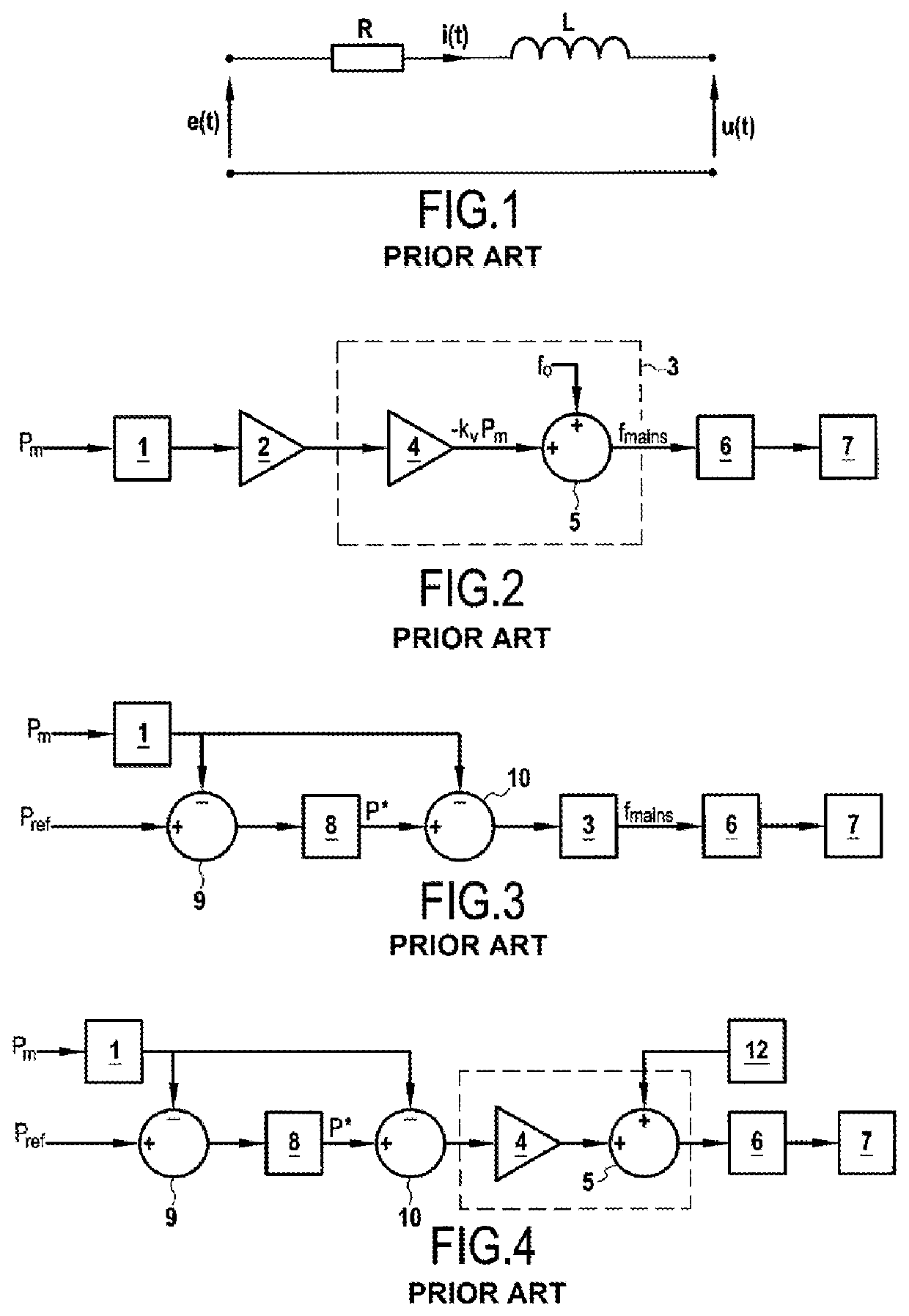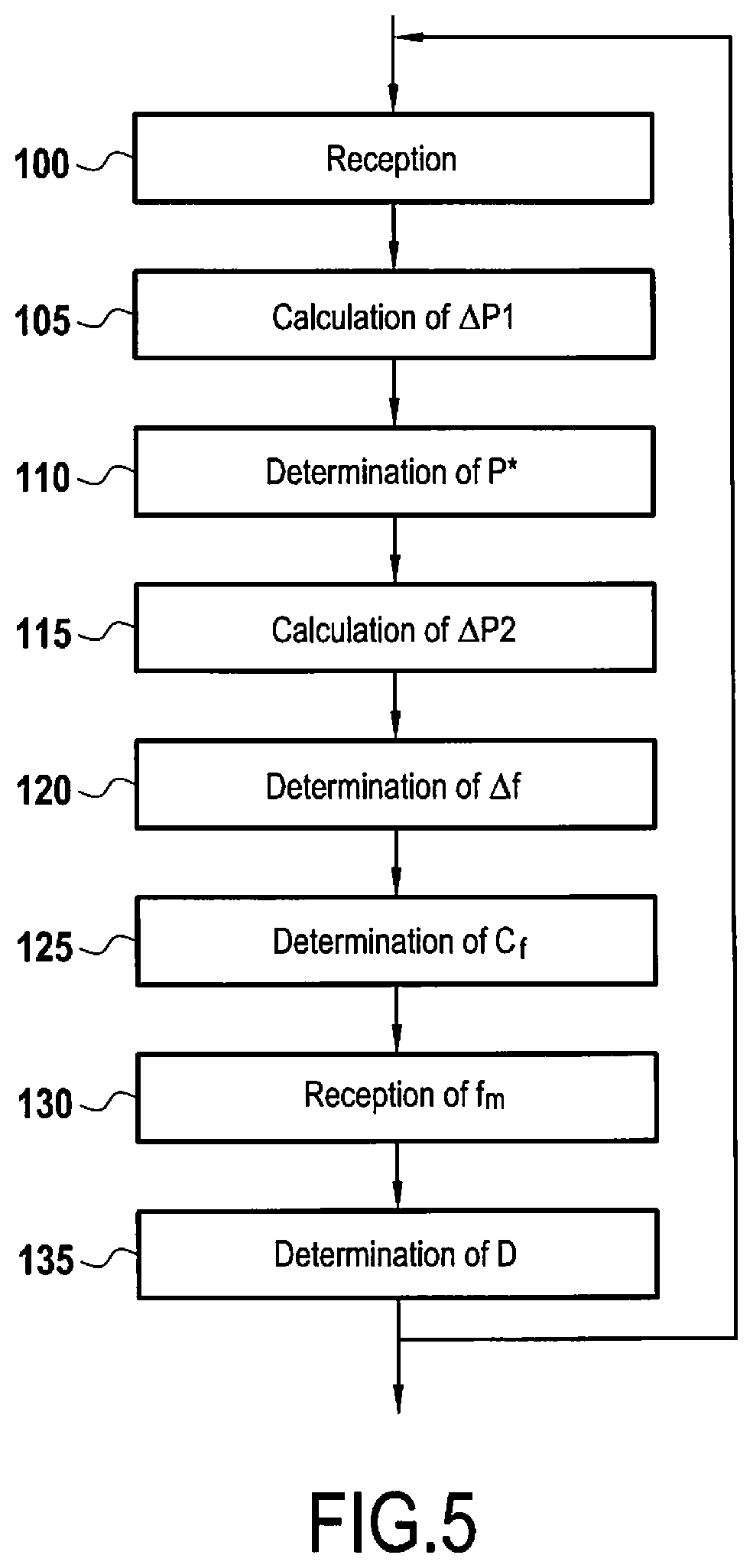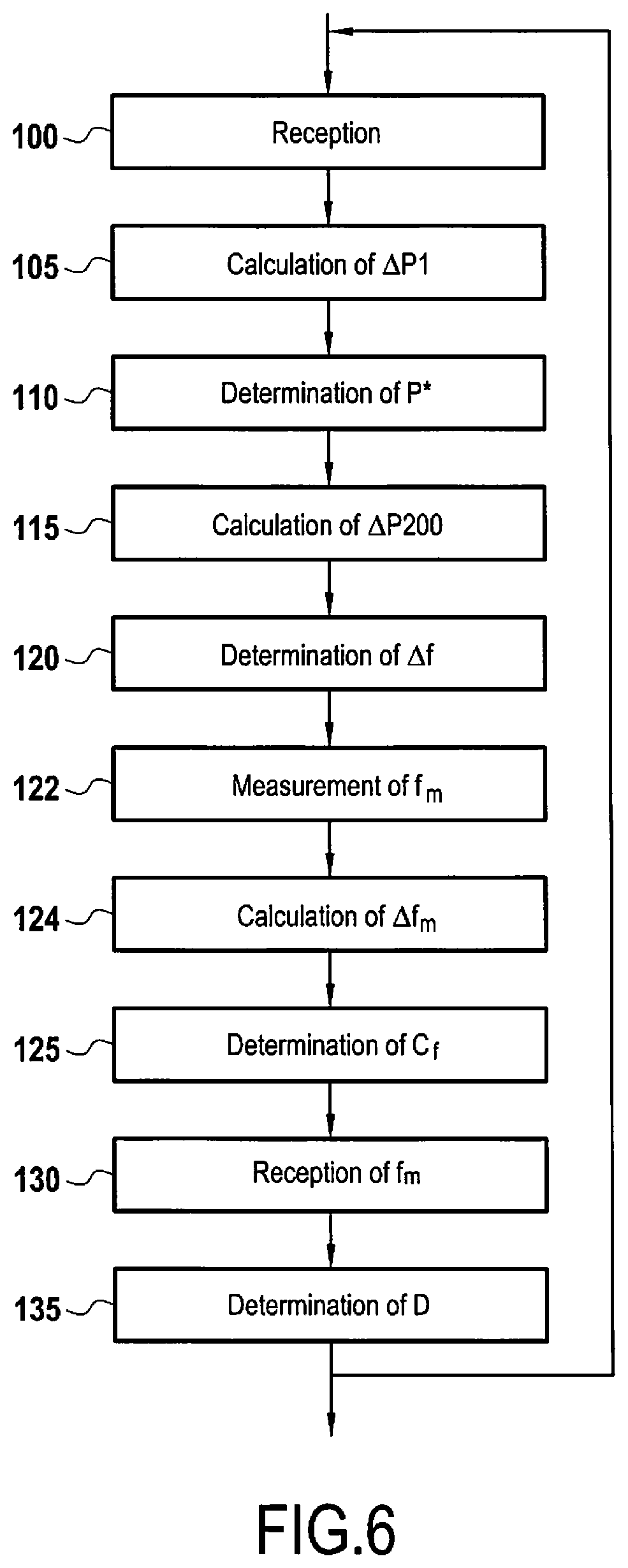Method and system for regulating an electrical converter for autonomous frequency stabilization with load transients in a micro-network comprising a diesel generating set
- Summary
- Abstract
- Description
- Claims
- Application Information
AI Technical Summary
Benefits of technology
Problems solved by technology
Method used
Image
Examples
first embodiment
[0085]FIG. 5 schematically shows a flowchart of a method for regulating a converter, such as a power control system, for autonomously stabilizing the frequency in a microgrid to which the converter is intended to be connected, the microgrid comprising a generating set.
[0086]In this first embodiment of the regulation method, the method comprises a first step 100 of receiving an initial power setpoint Pref of the converter and an estimate of an active power Pm of the converter.
[0087]In a second step 105 of the regulation method, a first power variation ΔP1 is determined by calculating the difference between the initial power setpoint Pref and the estimated active power Pm.
[0088]In a third step 110 of the regulation method, a power regulation variable P* is determined from the first power variation ΔP1.
[0089]In a fourth step 115 of the regulation method, a second power variation ΔP2 is calculated from the difference between the power regulation variable P* and the estimated active powe...
second embodiment
[0098]FIG. 6 shows a flowchart of a method for regulating a converter, such as a power control system, for autonomously stabilizing the frequency in a microgrid to which the converter is intended to be connected, the microgrid comprising a generating set.
[0099]The steps of the second embodiment of the regulation method illustrated in FIG. 6 identical to the steps of the first embodiment of the regulation method illustrated in FIG. 5 bear the same reference numerals.
[0100]The second embodiment of the regulation method illustrated in FIG. 6 differs from the first embodiment of the regulation method illustrated in FIG. 5 in that:[0101]it comprises a first additional step 122 in which the network frequency of the microgrid fm is measured with a phase-locked loop,[0102]it also comprises a second additional step 124 in which a difference Δfm between said measurement of the network frequency fm and a nominal frequency f0 of the converter, is calculated,[0103]the measured network frequency ...
PUM
 Login to View More
Login to View More Abstract
Description
Claims
Application Information
 Login to View More
Login to View More - R&D
- Intellectual Property
- Life Sciences
- Materials
- Tech Scout
- Unparalleled Data Quality
- Higher Quality Content
- 60% Fewer Hallucinations
Browse by: Latest US Patents, China's latest patents, Technical Efficacy Thesaurus, Application Domain, Technology Topic, Popular Technical Reports.
© 2025 PatSnap. All rights reserved.Legal|Privacy policy|Modern Slavery Act Transparency Statement|Sitemap|About US| Contact US: help@patsnap.com



